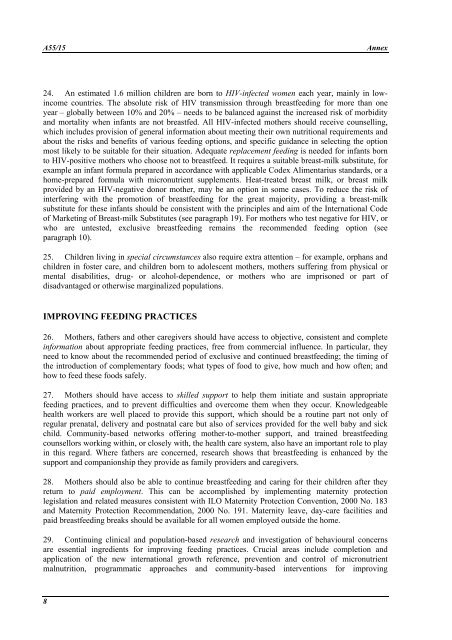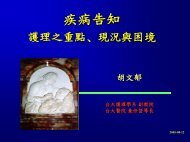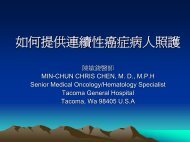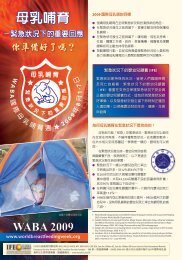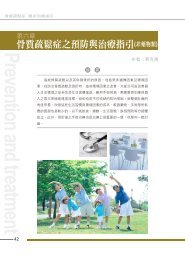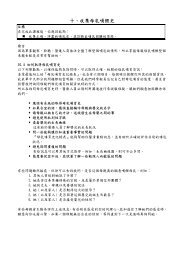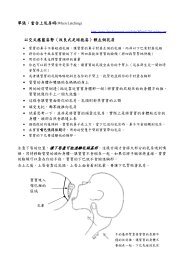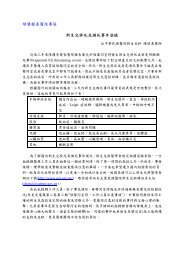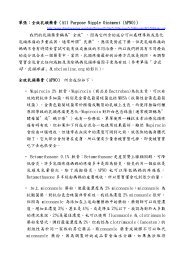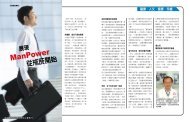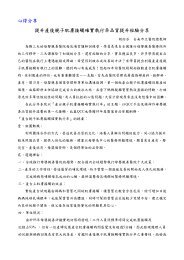WORLD HEALTH ORGANIZATION Infant and young child nutrition
WORLD HEALTH ORGANIZATION Infant and young child nutrition
WORLD HEALTH ORGANIZATION Infant and young child nutrition
Create successful ePaper yourself
Turn your PDF publications into a flip-book with our unique Google optimized e-Paper software.
A55/15 Annex24. An estimated 1.6 million <strong>child</strong>ren are born to HIV-infected women each year, mainly in lowincomecountries. The absolute risk of HIV transmission through breastfeeding for more than oneyear – globally between 10% <strong>and</strong> 20% – needs to be balanced against the increased risk of morbidity<strong>and</strong> mortality when infants are not breastfed. All HIV-infected mothers should receive counselling,which includes provision of general information about meeting their own <strong>nutrition</strong>al requirements <strong>and</strong>about the risks <strong>and</strong> benefits of various feeding options, <strong>and</strong> specific guidance in selecting the optionmost likely to be suitable for their situation. Adequate replacement feeding is needed for infants bornto HIV-positive mothers who choose not to breastfeed. It requires a suitable breast-milk substitute, forexample an infant formula prepared in accordance with applicable Codex Alimentarius st<strong>and</strong>ards, or ahome-prepared formula with micronutrient supplements. Heat-treated breast milk, or breast milkprovided by an HIV-negative donor mother, may be an option in some cases. To reduce the risk ofinterfering with the promotion of breastfeeding for the great majority, providing a breast-milksubstitute for these infants should be consistent with the principles <strong>and</strong> aim of the International Codeof Marketing of Breast-milk Substitutes (see paragraph 19). For mothers who test negative for HIV, orwho are untested, exclusive breastfeeding remains the recommended feeding option (seeparagraph 10).25. Children living in special circumstances also require extra attention – for example, orphans <strong>and</strong><strong>child</strong>ren in foster care, <strong>and</strong> <strong>child</strong>ren born to adolescent mothers, mothers suffering from physical ormental disabilities, drug- or alcohol-dependence, or mothers who are imprisoned or part ofdisadvantaged or otherwise marginalized populations.IMPROVING FEEDING PRACTICES26. Mothers, fathers <strong>and</strong> other caregivers should have access to objective, consistent <strong>and</strong> completeinformation about appropriate feeding practices, free from commercial influence. In particular, theyneed to know about the recommended period of exclusive <strong>and</strong> continued breastfeeding; the timing ofthe introduction of complementary foods; what types of food to give, how much <strong>and</strong> how often; <strong>and</strong>how to feed these foods safely.27. Mothers should have access to skilled support to help them initiate <strong>and</strong> sustain appropriatefeeding practices, <strong>and</strong> to prevent difficulties <strong>and</strong> overcome them when they occur. Knowledgeablehealth workers are well placed to provide this support, which should be a routine part not only ofregular prenatal, delivery <strong>and</strong> postnatal care but also of services provided for the well baby <strong>and</strong> sick<strong>child</strong>. Community-based networks offering mother-to-mother support, <strong>and</strong> trained breastfeedingcounsellors working within, or closely with, the health care system, also have an important role to playin this regard. Where fathers are concerned, research shows that breastfeeding is enhanced by thesupport <strong>and</strong> companionship they provide as family providers <strong>and</strong> caregivers.28. Mothers should also be able to continue breastfeeding <strong>and</strong> caring for their <strong>child</strong>ren after theyreturn to paid employment. This can be accomplished by implementing maternity protectionlegislation <strong>and</strong> related measures consistent with ILO Maternity Protection Convention, 2000 No. 183<strong>and</strong> Maternity Protection Recommendation, 2000 No. 191. Maternity leave, day-care facilities <strong>and</strong>paid breastfeeding breaks should be available for all women employed outside the home.29. Continuing clinical <strong>and</strong> population-based research <strong>and</strong> investigation of behavioural concernsare essential ingredients for improving feeding practices. Crucial areas include completion <strong>and</strong>application of the new international growth reference, prevention <strong>and</strong> control of micronutrientmal<strong>nutrition</strong>, programmatic approaches <strong>and</strong> community-based interventions for improving8


